Fiber Felt Vs. Metal Foam--A Comparative Study Of Porous Media
Introduction
Porous materials are characterised by a distinct structure containing voids or pores. Their specific properties and functionalities have attracted attention across various industries. Among these materials, fibre felts and metal foams are particularly used due to their defined characteristics and applications.
This article begins with a comparative study of these two porous media. We hope you gain insight into their differences, advantages and practical applications.
1) Fibre Felt: Porous Solution for Advanced Filtration
Fibre felt is a non‐woven material typically composed of natural or synthetic fibres. These materials are interwoven using mechanical, thermal or chemical methods. The porosity of fibre felt can be regulated by adjusting the density of the fibres. Each formulation provides distinct functionality.
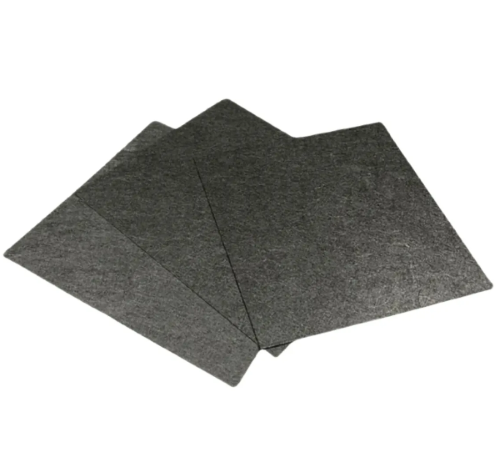
-Specifications
- Dimensions: Fibre felts vary in thickness, ranging from very thin sheets (a few millimetres) to several centimetres, depending on the application. SAM supplies high-quality thin fibre felts. The density and fibre diameter may vary and affect the felt's overall properties.
- Structure: The material comprises interwoven fibres, produced through mechanical interlacing, thermal bonding or chemical processes. The fibres may be arranged arbitrarily or in an ordered manner. The result is a mat-like material that is flexible and can be easily cut or shaped.
- Pore Size and Distribution: The pores are the gaps between the fibres. They range from very fine to relatively coarse. These characteristics influence the material’s filtration capacity, insulation performance and breathability.
-Advantages:
- Thermal Insulation: Fibre felts function as effective thermal insulators due to the air entrapped within their pores. They are employed in the construction, automotive and aerospace sectors.
- Sound Absorption: The porous structure absorbs sound and is utilised in the acoustic insulation of buildings and vehicles.
- Filtration: Fibre felts serve as efficient filters. They are used in systems that clean air and liquids, capturing particles while allowing fluids to pass through.
-Applications:
- Insulation: Used in buildings and vehicles for thermal and acoustic insulation to improve energy efficiency and reduce noise.
- Filtration: Employed as a filter medium in air purifiers, water treatment and industrial processes to remove particles and impurities.
- Protective Clothing: Utilised in protective clothing and materials because of their heat resistance and flame retardancy, ensuring safety in hazardous environments.
1) Metal Foam: Lightweight Media for Thermal Management
Metal foam is a lightweight porous material produced by creating air pockets within a metal matrix. The structure combines the mechanical strength of metal with the insulation properties provided by air.
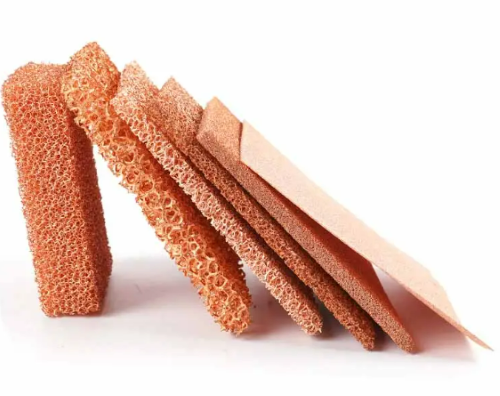
--Dimensions
- Dimensions: Metal foams are available in a range of shapes and sizes, with thicknesses varying from a few millimetres to centimetres. The pore size (or cell size) and foam density are critical parameters that determine its properties.
- Structure: The foam consists of a network of metal struts or bands forming the boundaries of the pores, resulting in a cellular structure. This structure may be open-cell, in which the pores are interconnected and permit fluid passage, or closed-cell, where each pore is sealed.
- Pore Size and Distribution: Pore sizes in metal foams range from less than 1mm to several mm. The distribution may be uniform or varied. Open-cell foams typically have larger, interconnected pores, whereas closed-cell foams have smaller, isolated pores.
-Advantages:
- High Strength-to-Weight Ratio: Metal foams provide high strength relative to their weight. They are used in applications where weight reduction is necessary.
- Energy Absorption: They can absorb significant energy upon impact. This property is beneficial for impact protection in the automotive and aerospace industries.
- Thermal Conductivity and Insulation: Depending on the base metal, metal foams exhibit specific thermal properties and may function as heat exchangers or insulating materials.
-Applications:
- Lightweight Construction: In the automotive and aerospace sectors, these materials are incorporated into structural components to reduce weight, thereby enhancing performance and fuel efficiency.
- Impact Protection: They are utilised as energy absorbers in impact protection systems and safety equipment, reducing the forces experienced in an impact.
- Thermal Management: Metal foams are also employed in heat exchangers and cooling systems in electronics and renewable energy systems.
Comparative Analysis
The selection between fibre felt and metal foam depends on the specific requirements of the application. Fibre felts provide thermal and acoustic insulation and function as efficient filters due to their fibrous structure. They are also flexible and can be readily adapted to different shapes and uses.
Metal foams, owing to their high strength-to-weight ratio and capacity to absorb energy, are better suited for structural and protective applications where mechanical performance is paramount. Their thermal properties can be adjusted to meet specific requirements. They may serve either as heat conductors or as insulating materials.
|
Characteristic |
Fibre Felt |
Metal Foam |
|
Material |
Non‐woven fabric made from natural/synthetic fibres |
Porous, with air pockets in a metal matrix |
|
Process |
Interweaving fibres using mechanical, thermal or chemical methods |
Creation of air pockets within the metal, forming a cellular structure |
|
Dimensions and Structure |
Variable thickness; flexible, mat-like |
Various shapes/sizes; cellular metal struts |
|
Pore Size |
Fine to coarse |
<1mm to several mm, uniform or variable |
|
Advantages |
Provides thermal insulation, sound absorption and filtration |
High strength-to-weight ratio, energy absorption, specific thermal properties |
|
Applications |
Insulation, filtration media, protective clothing |
Lightweight construction, impact protection, thermal management |
|
Flexibility |
Highly flexible, easily formable |
Structurally strong, less flexible |
|
Primary Use |
Thermal/acoustic insulation, filtering |
Structural support, protection, thermal management |
Conclusion
Both fibre felt and metal foam play essential roles in modern technology and design. They offer solutions for challenges in thermal management, structural design, energy absorption and filtration. With technological progress, the properties of porous media may be further improved through the development of new composite and hybrid materials.
Stanford Advanced Materials possesses extensive expertise in the production and distribution of metal foams. With a range of standard dimensions and varying thicknesses, SAM ensures that its metal foams meet the varied requirements of its customers. Please send us an enquiry if you are interested.

 Bars
Bars
 Beads & Spheres
Beads & Spheres
 Bolts & Nuts
Bolts & Nuts
 Crucibles
Crucibles
 Discs
Discs
 Fibers & Fabrics
Fibers & Fabrics
 Films
Films
 Flake
Flake
 Foams
Foams
 Foil
Foil
 Granules
Granules
 Honeycombs
Honeycombs
 Ink
Ink
 Laminate
Laminate
 Lumps
Lumps
 Meshes
Meshes
 Metallised Film
Metallised Film
 Plate
Plate
 Powders
Powders
 Rod
Rod
 Sheets
Sheets
 Single Crystals
Single Crystals
 Sputtering Target
Sputtering Target
 Tubes
Tubes
 Washer
Washer
 Wires
Wires
 Converters & Calculators
Converters & Calculators
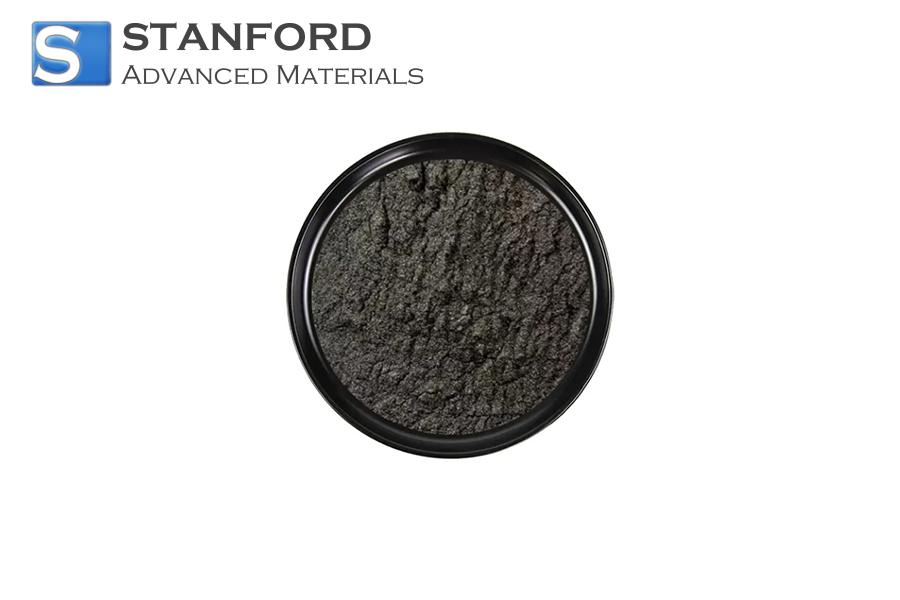
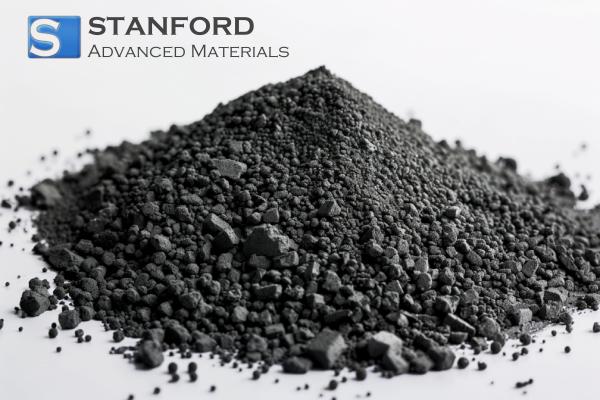
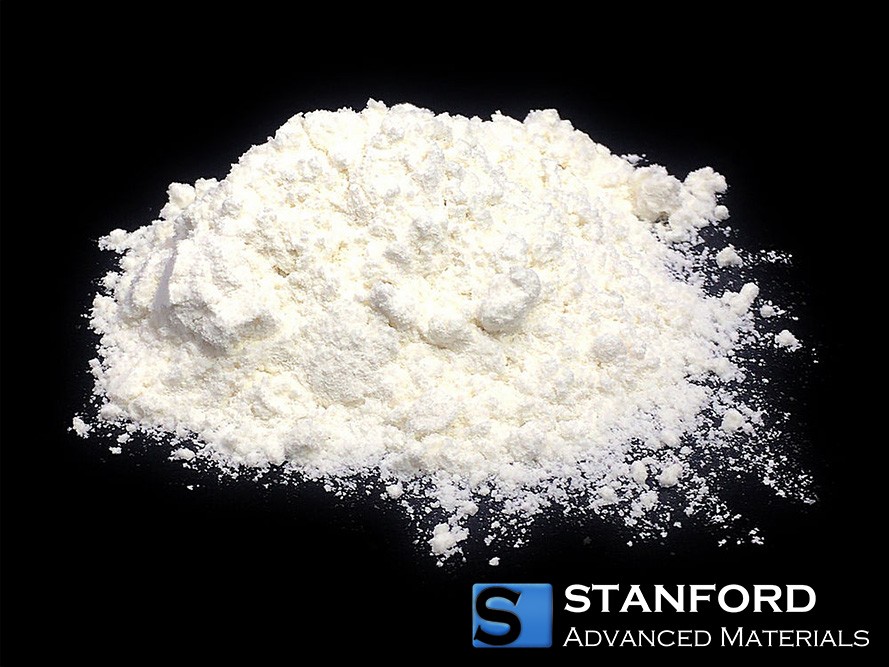
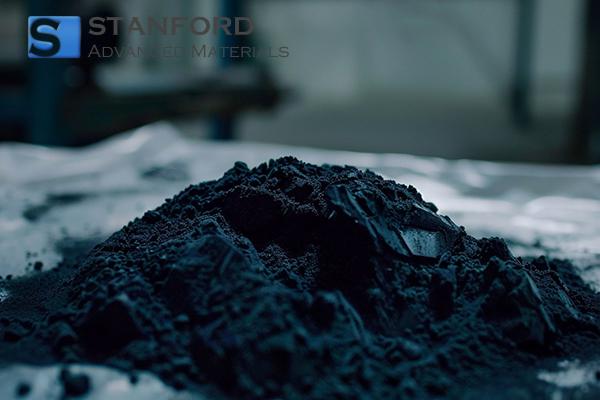
 Chin Trento
Chin Trento



